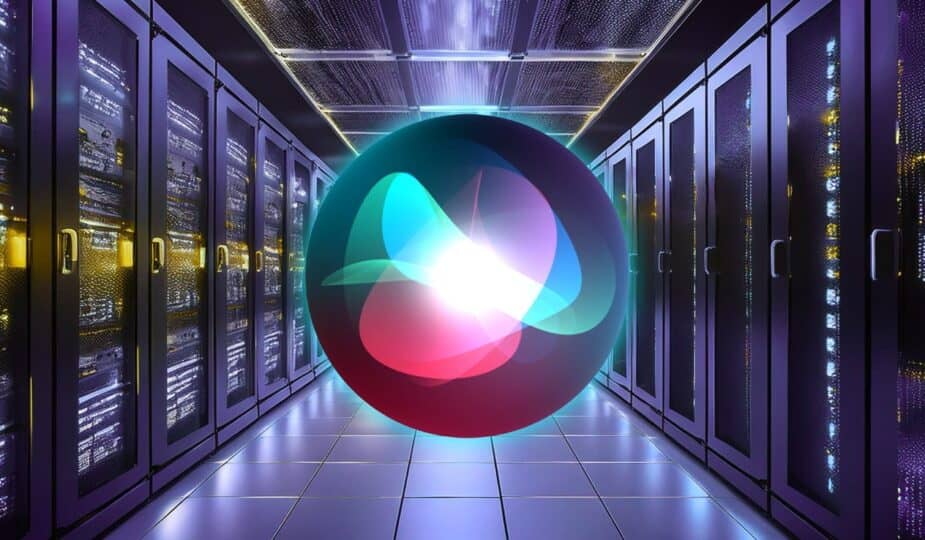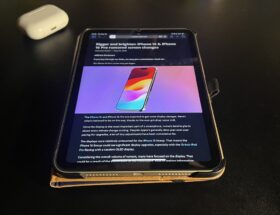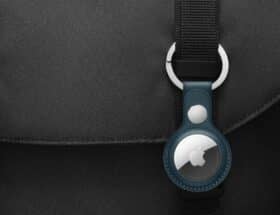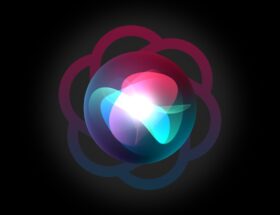Siri icon in a data center
 3 Facebook x.com Reddit BlueSky
3 Facebook x.com Reddit BlueSky
Apple is ramping up R&D on its own AI chip to reduce its reliance on third-party developers, potentially finally ending its decades-long unhappy relationship with Nvidia.
In November 2020, Apple announced the M1 chip, its first step in developing processors for the Mac line. The move effectively severed ties between Apple and Intel, the latter responsible for previous processors in Apple computers.
Now, it appears Apple is preparing to reduce its reliance on another third-party developer: Nvidia. Apple currently partners with Nvidia to power many of the features that underpin Apple Intelligence.
Nvidia currently controls somewhere between 70% and 95% of the AI chip market, Technology Magazine notes. Its market share has skyrocketed to the top of the most valuable companies. It even eclipsed Apple's top spot, albeit briefly, as CNBC notes.
Interestingly enough, Apple doesn't buy Nvidia's chips; instead, it rents access to them from cloud services run by Amazon and Microsoft. But Apple may be preparing to sever ties even further, reportedly partnering with Broadcom to develop its own AI server chip.
A Long, Unhappy Relationship
Apple's relationship with Nvidia began in the early 2000s, when the company began using Nvidia chips in its Macs to improve graphics performance. But even then, the relationship between the companies was strained.
During a meeting with a senior Nvidia executive, then-CEO Steve Jobs allegedly said Nvidia's products contained technology copied from Pixar, sources told The Information. Jobs had a controlling stake in the animation studio at the time. The executive objected to the idea, but Jobs simply ignored him for the rest of the meeting.
For its part, Nvidia also appears to have had a hard time working with Apple. It found Apple too demanding, especially for a company that consistently ranked outside Nvidia's top 10 customers.
Apple found Nvidia exceptionally difficult to work with, according to former employees. Nvidia's standard chips were far from energy efficient and produced a lot of heat, both of which were undesirable for laptops. When Apple approached Nvidia about developing custom chips for MacBooks, Nvidia balked at the idea.
Tensions rose in 2008 when a faulty graphics chip designed by Nvidia found its way into Apple computers, as well as those made by Dell and HP. The event, dubbed “Bumpgate,” was the driving force behind Apple’s switch to AMD, which ultimately played a role in the development of Apple Silicon.
In the 2010s, Nvidia began to suspect that Apple, Samsung, and Qualcomm were using its proprietary technologies to render graphics on their smartphones. Nvidia continued to demand licensing fees from the alleged infringers.
In 2019, Apple ended its partnership with Nvidia on drivers for macOS Mojave. Not only did this cut off much of the future support, but the lack of driver work also prevented more modern cards from working on PCI-E Macs or on Macs with eGPUs.
It wasn't that either company was particularly averse to working with the other — at least not at the development level. Apple developers told AppleInsider that support for higher-end Nvidia cards would be welcome, and even went so far as to praise Nvidia's engineers.
Presumably, the change was made because someone at the top didn't want Nvidia's support. By this point, many acknowledged the bad blood between the companies, but no one was sure who exactly was responsible for the driver support cut.
Apple's Unwillingness to End the Feud
For now, Nvidia executives claim the fight is largely one-sided. Nvidia told The Information that the company remains open to collaborating with Apple.
For now, Apple appears set to launch its own AI chip, codenamed Baltra, in 2026. Baltra is expected to be manufactured by TSMC using its N3P process. Announced in April 2024, the technology is expected to first be used in chips for the iPhone 17 Pro.
Follow AppleInsider on Google News










